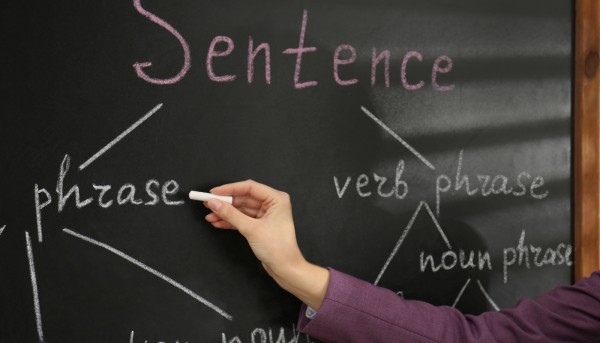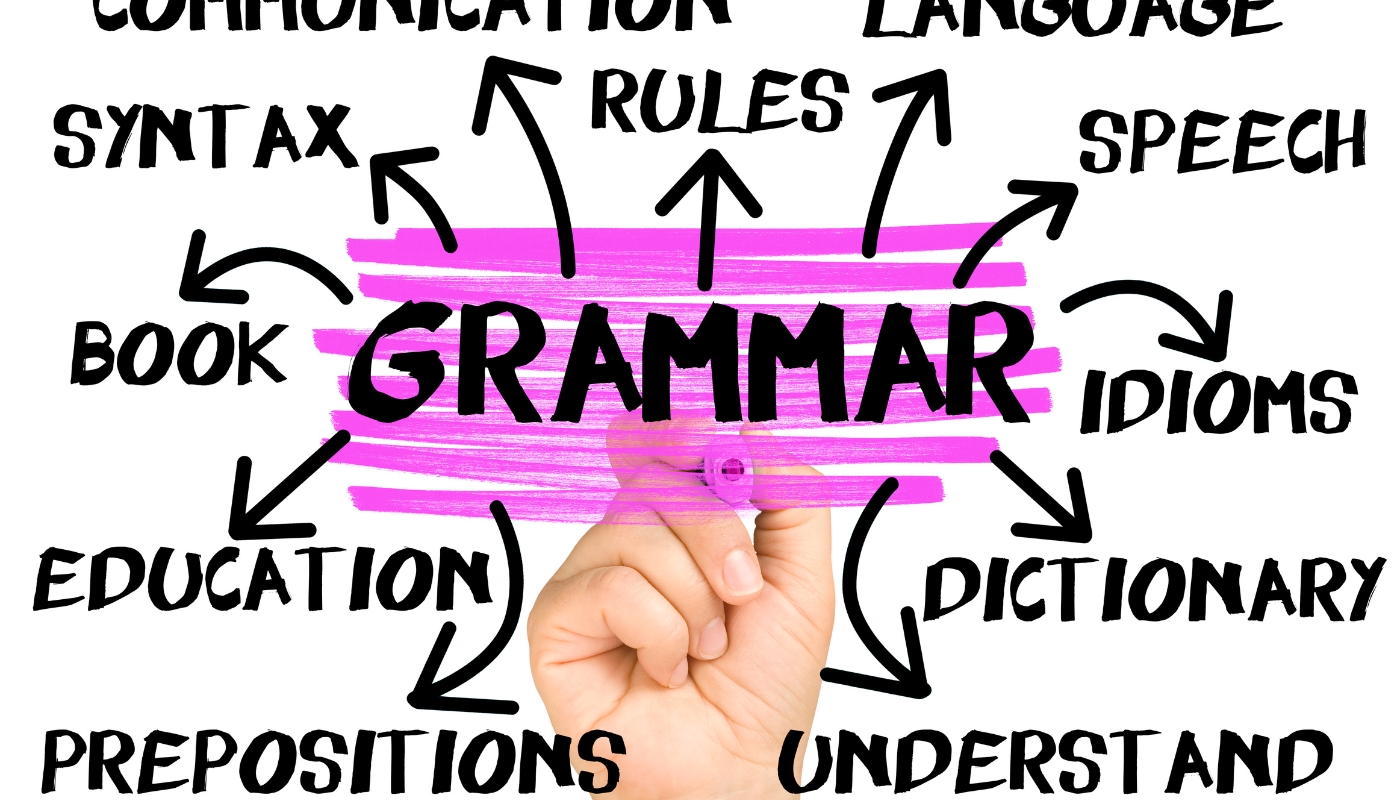Did you know that English is full of rules and intricacies? In this blog, we dive into the most common errors in English grammar. From verb tenses to punctuation marks, there are countless guidelines to follow to communicate effectively. So let’s dive in and discover the most typical grammar mistakes that people make, and learn how to steer clear of them!
Understanding Common Grammar Errors
English grammar is the backbone of your language-learning journey. It provides the structure, rules, and guidelines that help us effectively communicate our thoughts and ideas. However, even the most experienced English speakers can make typical grammar mistakes from time to time. These mistakes can range from a simple grammatical slip-up to more complex errors in sentence structure. By understanding the most common English grammar mistakes, we can elevate our language skills and avoid these errors in the future.
What are Grammar Errors?
Grammar errors are mistakes in the use of language. They can occur in various forms, such as misusing punctuation marks, subject-verb agreement issues, or confusing homophones. A subject-verb agreement error, for example, happens when the subject of the sentence does not match the verb in terms of singular or plural form. Misplaced commas, on the other hand, can change the meaning of a sentence or lead to run-on sentences.
Understanding the different meanings of words, like homophones, can help in avoiding grammar errors. By identifying these common errors, we can improve our grammar skills and communicate more effectively in English.
Why is Correct Grammar Important?
Correct English grammar goes beyond just following rules; it is the foundation of effective communication. When we use proper grammar, we ensure that our message is clear, concise, and easily understood.
Good grammar skills enhance the credibility of the writer, giving the perception of professionalism and intelligence. It also plays a crucial role in creating a positive first impression, whether in written or spoken form. Proper grammar promotes clarity of thought and expression, allowing ideas to flow smoothly and coherently. Lastly, strong English grammar skills are essential for professional success, as employers value clear and accurate communication. So, let’s delve into some of the most common grammar errors and learn how to avoid them.
Homonyms and How They Cause Grammar Errors
Homonyms, words that sound the same but have different meanings, are notorious for causing grammar errors. Confusion between homonyms can lead to typical grammar mistakes that are all too common in the English language, so learning homonyms is an important part of improving your English.
For example, the words “your” and “you’re” may sound the same, but they have different meanings. “Your” denotes possession, while “you’re” is the contraction of “you are.” Misusing these homonyms can result in various grammatical errors in writing and speech. Similarly, the homonyms “their,” “they’re,” and “there” are often mixed up, even though they have distinct meanings. Understanding the different meanings of homonyms is crucial to avoid common grammatical mistakes in English.
Your vs You’re
Understanding the distinction between “your” and “you’re” is crucial, as these terms are frequently confused in grammar usage. Misusing them often leads to typical grammar mistakes, so distinguishing between the two prevents common errors. Incorrect usage of “your” and “you’re” can result in frequent grammar mistakes, so it’s important to grasp their difference.
Their vs They’re vs There
The distinction between “their,” “they’re,” and “there” is another common grammar mistake in the English language. Although they sound the same, these homonyms have different meanings and functions. Let’s break it down:
- “Their” is a possessive pronoun that shows ownership or relationship. It is used to indicate something that belongs to a group of people.
- “They’re” is a contraction of “they are.” It combines the pronoun “they” with the verb “are” and is used to describe a group of people or provide information about them.
- “There” is an adverb that indicates a place or location.
- Misusing “their,” “they’re,” or “there” can result in common grammatical errors, but understanding their meanings and functions can help us to communicate more clearly and avoid common grammatical mistakes.
Its vs It’s
The difference between “its” and “it’s” is often a source of confusion in the English language. Understanding the distinct meanings of these homonyms can help us avoid frequent grammar mistakes. Let’s take a closer look:
- “Its” is the possessive form of the pronoun “it.” It is used to indicate ownership or possession, much like “his” or “hers.”
- “It’s” is a contraction of “it is” or “it has.” It combines the pronoun “it” with the verb “is” or “has,” depending on the context.
- Using “its” instead of “it’s” or vice versa can lead to typical grammar mistakes, but differentiating between the two will help us communicate more accurately. By understanding the meanings and functions of these homonyms, we can steer clear of common grammatical errors in our writing and speech.

The word ‘their’ should be ‘there’.
Common Errors in Using Verbs and Tenses
Verbs and tenses play a crucial role in constructing sentences correctly. However, common grammatical mistakes in the usage of verbs and tenses are frequent in the English language. From confusing “lay” and “lie” to misusing “affect” and “effect,” let’s explore some of these errors and learn how to avoid them, ensuring accurate verb and tense usage in our writing and speech. Improving your use of verbs and tenses can help you learn English fluently.
Lay vs Lie
The distinction between “lay” and “lie” is a common source of grammatical errors in the English language. Understanding the meanings and functions of these verbs will help us in using them correctly. Let’s take a look:
- “Lay” is a transitive verb that requires a direct object. It means to place or put something in a specific position or location.
- “Lie” is an intransitive verb that does not take a direct object. It means to recline, rest, or be in a flat position.
- Misusing “lay” and “lie” often results in common grammatical errors in English, but differentiating between the two will help us communicate more accurately. By understanding the meanings and functions of these verbs, we can avoid typical grammar mistakes and construct correct sentences.
Affect vs Effect
The difference between “affect” and “effect” is a common source of confusion in English grammar. Understanding the meanings and uses of these nouns and verbs can help us avoid frequent grammar mistakes. Let’s break it down:
- “Affect” is usually used as a verb, meaning to influence, modify, or change something.
- “Effect” is most commonly used as a noun, meaning the result, outcome, or consequence of an action.
- Using “affect” instead of “effect” or vice versa can lead to common grammatical errors, but differentiating between the two will help us convey our ideas accurately. By understanding the meanings and functions of these words, we can avoid frequent grammar mistakes in our writing and speech.
May vs Might
The distinction between “may” and “might” can cause some confusion in the English language. Understanding the subtle differences in their usage is crucial for accurate communication. Let’s delve into it:
- “May” is used to express permission, possibility, or a present factual situation.
- “Might” suggests a stronger sense of uncertainty than “may” and is often used in hypothetical or less probable situations.
- Understanding the difference between “may” and “might” will help us choose the most appropriate word in different contexts. The choice between “may” and “might” can impact the intended meaning of a sentence, so it’s essential to use them correctly.

Learn these verb and tense mistakes!
Misuse of Punctuation
Punctuation marks are essential for clear and effective communication in English. However, their misuse can easily result in common grammatical errors. From the humble comma to the en dash, these punctuation marks have specific rules that, when neglected, can lead to typical grammar mistakes. In the following sections, we will explore some common punctuation errors, such as the use of commas, semicolons, and parentheses, and learn how to avoid them. This is particularly helpful if you want to improve written English skills.
To Comma or Not to Comma
The comma is perhaps the most commonly used punctuation mark, but its usage can be tricky. Misplacing or omitting commas can lead to grammatically incorrect sentences. Let’s take a look at some guidelines for comma usage:
- Commas are used to separate independent clauses in a compound sentence.
- They are also used to separate items in a list.
- Commas can indicate a pause in a sentence or set apart introductory or parenthetical phrases.
- Misusing commas, such as in comma splices or missing them in the required places, can result in grammatical errors. Understanding when to use or omit commas is essential for maintaining the clarity and coherence of writing. By understanding the rules of comma usage, we can avoid frequent grammar mistakes in our writing.
Semicolons and Their Usage
Semicolons are punctuation marks that often cause confusion in English grammar. Misusing semicolons can lead to grammatical errors, but understanding their usage can enhance the complexity and variety of sentence structures. Let’s explore some guidelines for semicolon usage:
- Semicolons are used to connect independent clauses in a sentence without a conjunction.
- They can also be used to separate items in a complex list, especially when the items contain commas.
- Mastery of semicolon usage adds depth and sophistication to the overall writing style. Understanding when and how to use semicolons correctly can elevate our writing and help us avoid common grammatical mistakes.
Parentheses and Periods – Where do they belong?
Proper placement of parentheses and periods is crucial for maintaining clarity and organization in writing. Parentheses enclose additional information within a sentence, while periods denote the end. Misplacing them can disrupt flow and coherence, so understanding their correct use enhances readability and structure. Correct application contributes to precision and professionalism.

Some of these mistakes are made even by native speakers.
Issues with Plurals and Singulars
The rules for plural and singular nouns in English grammar can be confusing, resulting in common grammatical errors. From knowing when to use “an” instead of “a” to understanding the correct plural form of a word, these errors are frequent in English. In the following sections, we’ll discuss some common mistakes in using plural and singular forms, and learn how to overcome these grammar errors and improve your English.
When to use An vs A
The choice between “an” and “a” is determined by the sound that follows the article in the sentence, not the actual letter. Here are some guidelines:
- “An” is used before words that begin with a vowel sound, regardless of whether the word starts with a vowel or consonant letter.
- “A” is used before words that begin with a consonant sound.
- Using “an” instead of “a” before a word starting with a consonant sound is a common grammatical mistake. Understanding the pronunciation of words will help us determine whether to use “a” or “an” in a sentence, thus avoiding common grammatical errors in the plural and singular forms of nouns.
Rules for Plural Nouns
- Noun ends with sh, ch, s, x, or z? Add ‘es’ to make it plural
- Noun ends with consonant + y? Remove ‘y’, add ‘ies’ to make it plural
- Noun ends with consonant + o? Add ‘es’ to make it plural
- Most other nouns add ‘s’ to make the word plural
Plural or Singular – Which is correct?
When it comes to deciding between plural and singular forms of nouns, the key factor is the number of objects or entities being referred to. Mistaking the singular or plural form can result in grammatical errors. Understanding the context and quantity of nouns is crucial for selecting the appropriate form, ultimately enhancing language precision and coherence. Consistent and accurate application reinforces grammatical correctness.

The plural of tomato is tomatoes.
Common Errors with Prepositions
Prepositions are small but essential words in English grammar that indicate the relationship between words in a sentence. However, common grammar mistakes in using prepositions, such as confusing “in to” and “into” or “over” and “more than,” can hinder effective communication. Correct English is important, so let’s explore some of these mistakes, understand the distinctions, and avoid typical grammar errors in preposition usage.
In to vs Into
The choice between “in to” and “into” often perplexes English learners, leading to common grammatical mistakes. Understanding the contextual differences between the two is crucial for grammatical correctness. Here’s how to differentiate:
- “In to” is used when “in” and “to” are separate prepositional phrases in a sentence.
- “Into” is used to indicate movement or direction toward the inside of something.
- Misusing “in to” or “into” can result in ambiguous or grammatically inaccurate sentence structure. By understanding the appropriate usage of these prepositions, we can communicate more precisely and avoid common grammar mistakes in our writing and speech.
Over vs More Than
The distinction between “over” and “more than” often leads to common English grammar mistakes. Understanding the different meanings of these prepositions helps in accurate sentence construction. Let’s explore the differences:
- “Over” is used to indicate spatial relationships, as in moving across or being higher in position than something.
- “More than” is used when comparing quantities or numbers, indicating an increase or excess of a certain amount.
- Misusing “over” or “more than” can result in common grammatical errors, but differentiating between the two helps in conveying the intended meaning accurately. By understanding the meanings and functions of these prepositions, we can avoid frequent grammar mistakes in our writing and speech.

Prepositions are often used incorrectly in English.
Errors in Sentence Structure
Sentence structure is vital for clear and coherent communication in English grammar. However, errors in sentence construction, such as dangling modifiers, subject-verb agreement, or misplaced modifiers, are common grammatical mistakes. In the following sections, we’ll explore some of these errors in sentence structure and learn how to avoid them, ensuring grammatical accuracy in our writing.
Dangling Modifiers and How to Avoid Them
Dangling modifiers often result in grammatical errors, but understanding what they are and how to avoid them can greatly improve sentence structure. Here’s what you need to know:
- A dangling modifier is a word or phrase that does not clearly and logically modify the word it intends to.
- To avoid dangling modifiers, the modifier must be placed next to the word or phrase it modifies.
- Recognising misplaced modifier errors and ensuring they are properly positioned in a sentence is important in proper sentence construction. By being aware of misplaced modifiers, we can avoid common grammar errors in our writing.
Subject-Verb Agreement
Subject-verb agreement errors are some of the most common mistakes in English grammar. Understanding the rules of subject-verb agreement is crucial for clear communication. Here are some guidelines:
- A singular subject requires a singular verb, while a plural subject requires a plural verb.
- The verb should agree with the subject in terms of number, tense, and person.
- Subject-verb agreement errors often lead to frequent grammar mistakes, but mastering the rules ensures grammatical accuracy in writing and speech. By understanding subject-verb agreement, we can avoid common grammatical errors and create clear and coherent sentences.

Proper sentence structure can make your English fluent.
Are there any grammar mistakes that you commonly make?
As learners, it is common to make some English grammar mistakes without realizing it. Identifying the most frequent grammar mistakes in our writing or speech helps in improving our language skills. Let’s take a moment to reflect on the grammatical errors we commonly make and their impact on our language proficiency. By recognizing these frequent grammar mistakes, we can actively work towards improving our grammar skills and enhancing the clarity and correctness of our language usage.





